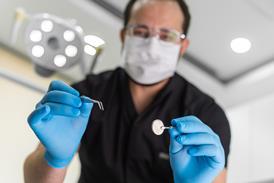The must-read stories and debate in health policy and leadership.
- Today’s release: NHSI loosens leash on teaching trust
- Today’s toilet story: Toilet leaks force relocation of sterile unit
Monstrous collapse
Unprecedented, awful, but not surprising.
The data will come as little surprise to those in the service, although it is perhaps at the worst end of the spectrum of what insiders could have predicted.
The long-term decline in performance against the service’s core targets has normalised failure to the point where the usual monthly data records a new incremental dip which is all but ignored, making only modest ripples in the national media and rarely prompting any comment from ministers.
But this was not just the usual monthly dip. It was a monstrous collapse in performance, the likes of which have not been recorded since the four-hour target’s introduction nearly 16 years ago.
There were a record 2,347 trolley waits in December alone – around eight times the 284 recorded in the same month last year, according to the official monthly data.
This is also more than the figure recorded for any single quarter prior to the third quarter of 2019-20 – a staggering fact.
Performance against the four-hour accident and emergency target in December overall slumped to a record low of 79.8 per cent – around seven percentage points lower than the 86.5 per cent recorded in December 2018.
Performance for major “type one” emergency departments in December hit a record low of 68.6 per cent – around 10 percentage points lower than the 79.1 per cent reported for the same month last year.
But it is perhaps the quarterly performance which perhaps best contextualises the decline. HSJ’s analysis of all the third quarters back to 2014-15 showed:
There were a record 4,185 trolley waits for the third quarter of 2019-20, more than three times the 1,262 reported in the previous highest number for a third quarter (2018-19).
Overall four-hour performance was 6.1 percentage points lower in the third quarter of 2019-20 (81.6 per cent) than in the same quarter a year earlier. This is nearly double the size of the next largest year-on-year drop in performance, which was a 3.6 per cent drop between the third quarters of 2015-16 and 2016-17.
Type one four-hour performance was nearly 10 percentage points lower in the third quarter of 2019-20 than the previous year, down to 71.5 per cent from 81.2 per cent – another unprecedentedly big slide.
Eye delays
New light has been shed on the risk of serious patient harm caused by widespread delays to follow-up appointments.
Particularly harrowing is the case of a 34-year-old woman who lost her sight after 13 months of delays, and now cannot see the faces of her young children or read books to them.
It comes after HSJ reported last month that 20,000 people had their sight put at risk due to delayed follow-ups over the last year.
Now, HSIB is calling for new action to monitor eye health follow-up appointments. It wants NHS England to enforce minimum performance standards for providers on follow-up eye patient appointments.
The standard would aim to ensure hospital appointments take place within no more than an additional 25 per cent of the recommended follow-up period – with a ”minimum standard” of 85 per cent of appointments being made in this time, and 95 per cent being an “achievable target”.
But NHSE was non-committal when asked whether it would bring in the standards.
A spokesman said: “By streamlining referrals and assessment as the NHS will be doing in 2020, it should be possible to further speed up access to ophthalmology operations.”



























No comments yet